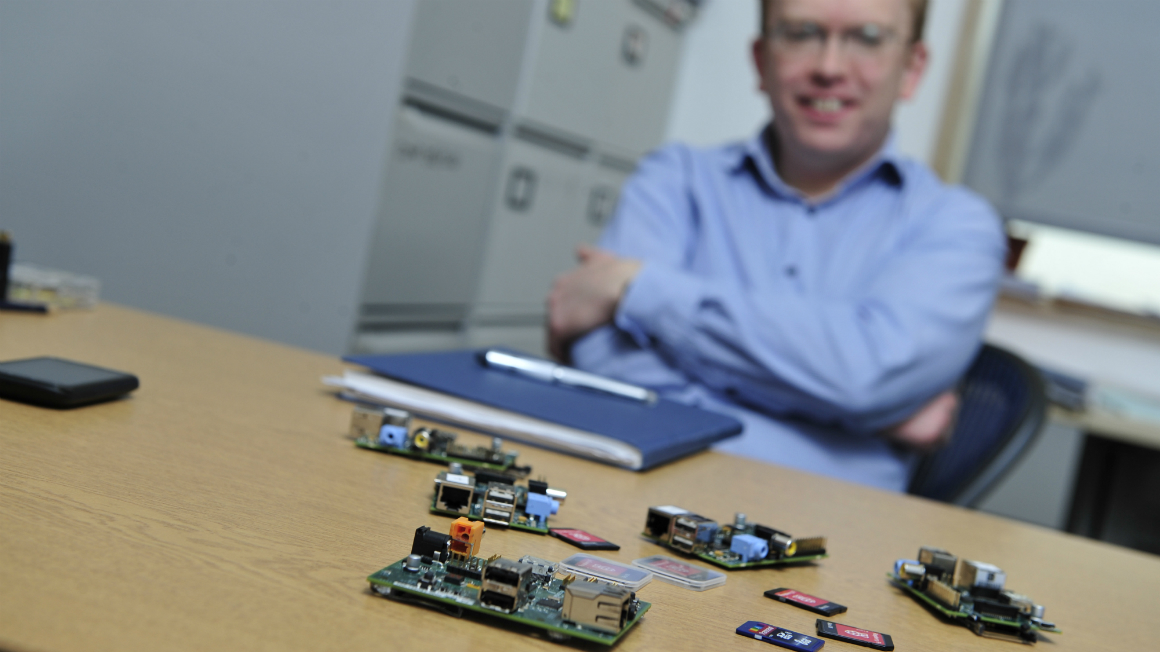'It would be fatal if we were still shipping the same Raspberry Pi in 2016'
We caught up with Eben Upton, the creator of the Raspberry Pi
One really important thing about Pi is that it's likely to be around in five years time. That's a big selling point. That you can build an industrial product on Pi, or you can design a curriculum around it.
LXF: And you don't want that diluted by third parties building their own…
EU: Absolutely. And I think to the extent that if we gave away the design and we enabled a lot of clone manufacturers, and we undermined the financial basis of what we're doing here, that would be all well and good. But it's not like we're scalping 10 bucks out of every Pi, right?

We're making little enough off every Pi and I think we've reduced the cost of the Pi to everyone else, so I think the profits that would just go into other people's pockets would be extracted in dividends; would be extracted in profits by companies. All that would happen would be that we'd end up destabilising the foundation; the foundation's ability to invest in education, the foundation's ability to invest in funding open source projects for no tangible consumer benefit.
There'd be an ideological benefit, because we'd be able to tick a box that says, 'Open!!' and that would be it. And then there would be this problem that I think opprobrium would be heaped on Broadcom if it didn't then make the chips available.
A new Pi
LXF: Is there going to be an upgrade to the Pi? Have you considered a modular Pi?
EU: We have no room for additional RAM on the device at the moment ... We have no ability to expand the RAM because that's all the SoC (system on a chip) can talk to. We have no ability to increase the processing power because that's the amount of processing power the SoC has got. We don't really have a hardware roadmap.
Get daily insight, inspiration and deals in your inbox
Sign up for breaking news, reviews, opinion, top tech deals, and more.
LXF: In the back of your mind, you haven't got Raspberry Pi 2?
EU: I think it would be really sad, and probably fatal for us, if we were still shipping the same Raspberry Pi in 2016, say. I think we'll have to do something but I don't know what that something is ... The real problem is that I can imagine boards I could build at any price between $25 and $85 ... I can imagine a different board that I could build at each $10 increment. None of which are currently being built.
But finding one that's actually attractive, that's got the same kind of attractiveness of the Pi… Pi's attractive because it's got a really interesting price/performance tradeoff. It really is extremely hard to do. I certainly don't think that at the $25 to $35 price point, I can't think of any other board I could build.
With any chip that's available to me, I can't think of any board that I could build at say $25 or even $35 that would be as good as Pi, let alone better. But it's a push even at $45. At $55 I could imagine that you'd get to the point where you can start to get better but it's interesting that there's nothing out there right now.
LXF: How do you then maintain the momentum of success?
EU: By doing a lot of software work.
LXF: So that's where all the effort is now?
EU: With 700MHz, [the Pi] is an enormously powerful media accelerator. The chip is 97% media accelerator.
LXF: And a default installation of Raspbian, what would that use?
EU: Currently, it uses the video output path, the USB controller; stuff that was there before the ARM. The ARM made the chip 3% bigger. You're beating up mostly on the ARM, a little bit of system infrastructure, an SDRAM controller and a few tiny peripherals.